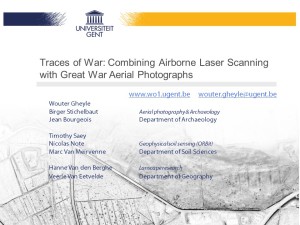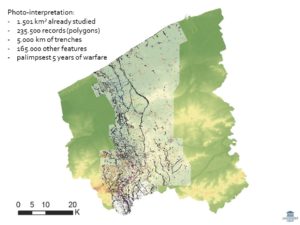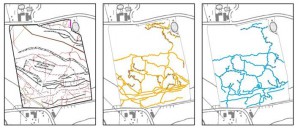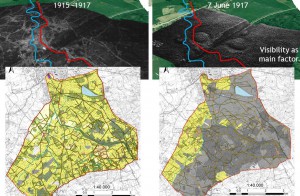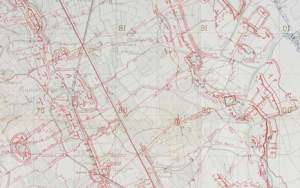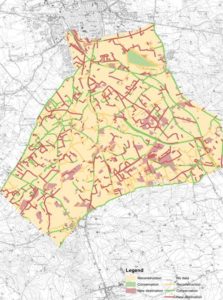(September 2016)
Identifying relations between the dynamic military landscape and network of linear features throughout the Great War
During the Great War the impact of the conflict on the landscape in the western part of Belgium along the front line was enormous. Throughout this war, aerial photographs were taken for military purposes to provide insights into the strategy of the enemy. Today these valuable historic photographs can be used to analyse how the landscape changed during the war and to make inventories of military features. In this paper we want to present an interdisciplinary method to analyse historic aerial photographs. The research area is located in the western part of Belgium, more specifically the area south of the city Ypres (Heuvelland). This area was completely transformed during the war into a military landscape. The first aim of this paper is to understand how land use and linear structures (road network, military features like communication lines and railways) changed during the war. Secondly, the changes of the military linear network which was being developed alongside the trench war are analysed. Landscape change trajectories as well as military features were mapped throughout the war period based on the historical aerial photographs. In addition, we also studied the topography of Heuvelland based on a LIDAR elevation model. Based on this landscape analysis and remote sensing archaeology, we were able to study the changes of this historic network and to combine it with the topography and the landscape change trajectories. The analysis shows different dependent relations between the network and the specific topographical and landscape conditions, which differ along the frontline, on the one hand, and the different military tactics of the different parties, on the other. Finally, by way of conclusion, we want to emphasize the usefulness and contribution of the historic aerial photographs in an interdisciplinary non-invasive landscape research method, combining landscape analysis, remote sensing archaeology and geophysical soil sensing data.
Van den Berghe, H., Gheyle, W., Stichelbaut, B., Note, N., Saey, T., Bourgeois, J., Van Meirvenne, M., Van Eetvelde, V.
Permanent European Conference on the Study of the Rural Landscape
